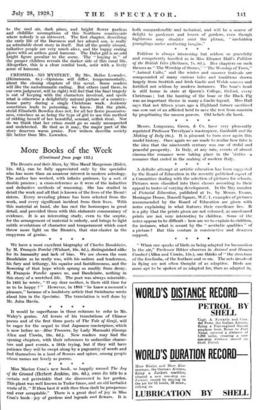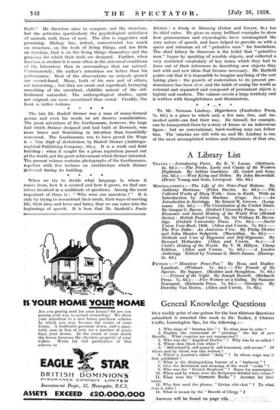" When one speaks of birds as being adapted for
locomotion In the air," Professor Ritter observes in Animal and human Conduct (Allen and Unwin, 15s.), one thinks of " the structure of the forelimbs, of the feathers and so on. The acts involved in flying are not often thought of as adaptive. Birds are more apt to be spoken of as adapted for, than as adapted in,
flight." He therefore aims to compare, not the structure, but the activities (particularly the psychological activities) of animals with those of men. The idea is suggestive and promising. Biology has, indeed, concentrated too much on structure, on the tools of living things, and too little on function, that is on the living things themselves and the purposes for which their tools are designed. Further, when function is studied it is more often in the abnormal conditions of the laboratory than in surroundings that are natural. Unfortunately, the author's intentions are 'better than his peiformance. Most of the observations on animals quoted arc second-hand. Many, both of his own and of others, arc interesting ; but they are crude and superficial, betraying something of the uncritical, childlike naltele of the old- fashioned naturalist. The anthropological studies, again not original, are more sensational than sound. Frankly, the book is rather tedious.





































 Previous page
Previous page